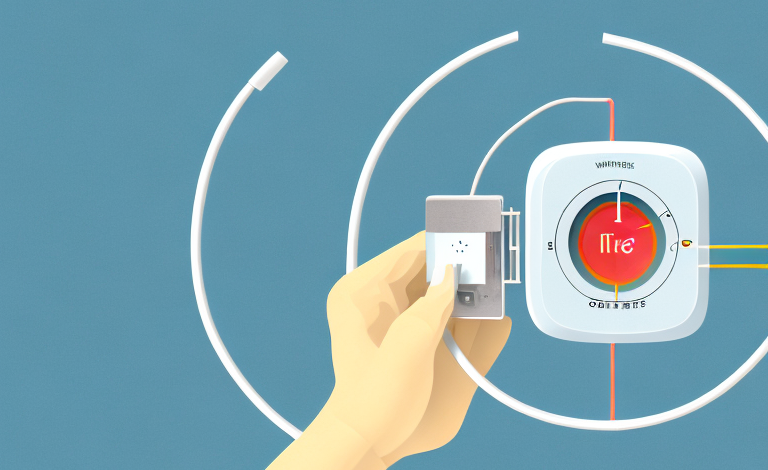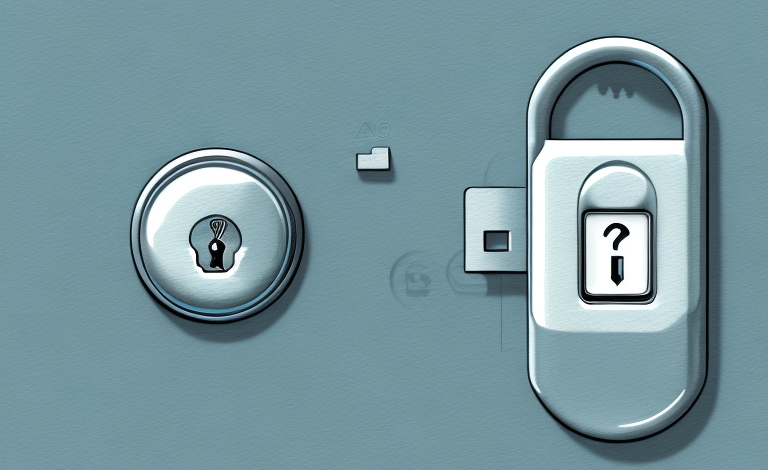In recent years, smart thermostats have become more and more prevalent in homes across the country, promising greater convenience and energy savings. However, not all homes are equipped with the necessary wiring to support these high-tech devices. If you don’t have a C wire, or common wire, for your smart thermostat, you may be wondering what options you have, and what it means for your home heating and cooling system. In this article, we’ll help you understand the purpose of the C wire, how a smart thermostat works without one, and what steps you can take to address the issue.
Understanding the purpose of the C wire in a smart thermostat
The C wire, or common wire, is an essential component in smart thermostat installation. It enables the thermostat to receive a continuous flow of power from your HVAC (heating, ventilation, and air conditioning) system, rather than relying on battery power. This allows the thermostat to maintain a constant connection to your home’s Wi-Fi network, and provides power for features like voice control, remote access, and automatic scheduling. Without a C wire, your smart thermostat may still function, but not at full capacity, and you run the risk of frequent battery replacements.
It’s important to note that not all HVAC systems have a C wire. In some cases, a professional electrician may need to install one in order to properly install a smart thermostat. Additionally, some smart thermostats come with alternative power options, such as a power extender kit, that can be used in place of a C wire. It’s important to research and understand the power requirements of your specific smart thermostat and HVAC system before installation.
How a smart thermostat works without a C wire
If you’re installing a smart thermostat without a C wire, you may be wondering how it’s possible for the device to function at all. The answer lies in the design of the thermostat itself. Many smart thermostats are built with a technology called power stealing, which allows the device to draw small amounts of power from the other wires in your HVAC system. Specifically, the thermostat will draw power from the Rh (heating) or Rc (cooling) wires, depending on whether your system is in heating or cooling mode. This power is used to keep the device running, and to charge the battery when necessary. While power stealing technology has come a long way, there are still certain issues that can arise when installing a smart thermostat without a C wire.
One issue that can arise when installing a smart thermostat without a C wire is that the device may not receive enough power to function properly. This can result in the thermostat not being able to maintain the desired temperature, or even shutting down completely. To avoid this issue, it’s important to choose a smart thermostat that is specifically designed to work without a C wire, and to follow the manufacturer’s installation instructions carefully.
Another potential issue with installing a smart thermostat without a C wire is that it may not be compatible with all HVAC systems. Some older systems may not have the necessary wiring to support a smart thermostat, and may require additional modifications or upgrades to work properly. It’s important to consult with a professional HVAC technician before attempting to install a smart thermostat without a C wire, to ensure that your system is compatible and that the installation is done correctly.
Common issues that arise when installing a smart thermostat without a C wire
One of the most common issues that homeowners experience when installing a smart thermostat without a C wire is battery drain. Because the device is constantly drawing power from other wires in the system, the battery can drain quickly, leaving you without a functioning thermostat until you replace the battery. This can be particularly frustrating if you’re away from home and unable to manually change the temperature. Additionally, if your HVAC system doesn’t have the necessary wiring for power stealing, you may find that your smart thermostat simply won’t work at all.
Another issue that can arise when installing a smart thermostat without a C wire is compatibility with your HVAC system. Some older systems may not be compatible with newer smart thermostats, which can lead to issues with functionality and accuracy. It’s important to research and ensure that your HVAC system is compatible with the smart thermostat you plan to install before making the purchase. Additionally, if you’re not comfortable with electrical wiring, it’s best to hire a professional to install the thermostat to avoid any potential damage to your HVAC system or the thermostat itself.
Why you might be experiencing battery drain with your C-wire-less smart thermostat
Many homeowners who install a smart thermostat without a C wire wonder why their battery seems to be draining faster than expected. There are a few different reasons why this might be happening. First, the power stealing technology used by smart thermostats can be particularly draining on the battery during times of high HVAC system usage. This is because the constant cycle of heating and cooling can cause the thermostat to draw power more frequently. Additionally, if your thermostat is installed in a location that’s exposed to extreme temperatures or direct sunlight, this can also cause faster battery drain.
Another reason why your C-wire-less smart thermostat may be experiencing battery drain is due to the age of your HVAC system. Older systems may require more power to operate, which can cause the thermostat to draw more power from the battery. It’s important to check the compatibility of your smart thermostat with your HVAC system before installation to ensure that it can handle the power requirements. Additionally, if you have multiple smart devices connected to your home’s Wi-Fi network, this can also contribute to faster battery drain as the thermostat constantly communicates with these devices.
Possible solutions for powering a smart thermostat without a C wire
If you’re experiencing issues with your smart thermostat due to a lack of C wire, there are a few possible solutions you can try. One option is to install a power extender kit, which provides a continuous source of power for your smart thermostat by linking it to another wire in your HVAC system. These kits are typically easy to install and affordable, and can provide a reliable alternative to a C wire. Another option is to have a professional install a C wire in your system. This can be a more complicated and costly option, but it will provide the best long-term solution for powering your smart thermostat.
It’s important to note that some smart thermostats may not be compatible with power extender kits, so it’s important to check with the manufacturer before purchasing one. Additionally, if you’re not comfortable working with electrical wiring, it’s best to hire a professional to install either a power extender kit or a C wire. Attempting to do it yourself could result in damage to your HVAC system or even injury.
Step-by-step guide to installing a C wire for your smart thermostat
If you’ve decided to go the route of installing a C wire for your smart thermostat, it’s important to know what you’re getting into. While the process can be relatively easy for those with some experience in electrical work, it’s not typically recommended for those without prior knowledge. Here’s a brief overview of the steps involved:
- Turn off power to your HVAC system by shutting off the circuit breaker.
- Remove the faceplate and control panel from your thermostat.
- Locate the wire bundle in your HVAC system and identify the wires.
- Connect the C wire to the designated terminal in your HVAC system and feed it through the wall to the thermostat location.
- Connect the C wire to the designated terminal in your thermostat, and reattach the faceplate and control panel.
- Turn the power back on to your HVAC system, and test your new C wire connection.
What to do if you can’t install a C wire for your smart thermostat
If you’re unable to install a C wire for your smart thermostat, there are still a few options you can try. One is to use a different type of thermostat that doesn’t require a C wire, such as a battery-operated or line-powered thermostat. These devices won’t have all of the features of a smart thermostat, but can still provide basic temperature control. Another option is to have a professional install a new HVAC system that’s compatible with smart thermostats. While this is a more drastic solution, it can provide a long-term solution for homeowners who want to take advantage of the benefits of smart home technology.
Advantages and disadvantages of having a C wire for your smart thermostat
While installing a C wire for your smart thermostat can provide a more reliable source of power, there are both advantages and disadvantages to consider. Some benefits of having a C wire include:
- Avoiding battery drain issues that can disrupt your home’s heating and cooling.
- Providing a continuous source of power for your smart thermostat’s features, such as scheduling, voice control, and remote access.
- Eliminating the need for frequent battery replacements, which can be costly and time-consuming.
However, there are also some potential downsides to consider:
- The cost and complexity of installing a C wire, which can vary depending on the extent of the wiring required.
- The possibility of damaging your HVAC system or thermostat during the installation process.
- The necessity of having a professional install the wire, which can add to the overall cost of your smart thermostat installation.
How to troubleshoot issues with your smart thermostat’s C wire
If you’ve installed a C wire for your smart thermostat and are still experiencing issues, there may be a problem with the wiring or connection. Here are a few common troubleshooting steps you can take:
- Check the connections at both the thermostat and the HVAC system, making sure that they’re secure and free of debris.
- Switch off the power to your system and examine the wiring for signs of damage, such as fraying or melting.
- Reset your thermostat to its factory settings and try reinstalling it, making sure to follow the manufacturer’s instructions carefully.
If you’ve tried these steps and still can’t resolve the issue, it may be time to call in a professional for assistance.
Conclusion
Overall, the lack of a C wire can be a frustrating obstacle for homeowners who want to take advantage of the benefits of smart home technology. However, with the right knowledge and resources, it’s possible to find a solution that works for your particular situation. Whether that involves installing a C wire, using an alternative type of thermostat, or upgrading your HVAC system, it’s important to weigh the pros and cons and make an informed decision. With the right setup in place, you’ll be able to enjoy the convenience, energy efficiency, and comfort that a smart thermostat can provide.



